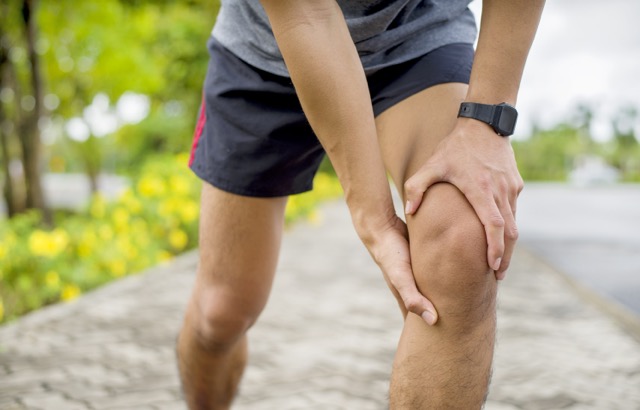The knee is a complicated joint and there a variety of injuries that can occur, but the two most common injuries are patellofemoral pain syndrome (PFPS) and Illio tibial band syndrome (ITBS). Both of these conditions have a nasty habit of starting off slightly niggly and then developing into a full-blown chronic injury if not assessed and rehabilitated appropriately.
These injuries generally occur when there is a sudden increase in running volume and frequency or changes have been made to the type of training, i.e adding hills or sprints (interval training). These changes exacerbate pre-existing flaws in running technique, biomechanics or muscle balance leading to such injuries.
Should you find yourself fighting with a niggly knee or you have just developed a knee injury, then RICE (Rest, Ice, Compress and Elevate) should be applied. I advise my athletes to use Physicool (physicool.co.uk), a cooling bandage that can be easily applied to any peripheral joint – much easier than trying to secure a bag of peas to your knee not to mention a lot more comfortable!
Check your Trainers! Are they over 2 years old? Have they done more than 400 miles? If you answered ‘yes’ to either of those questions then you need to update them. I also advise that you go to a reputable running shop with a gait analysis service. It may be a bit more expensive than what you can find online, but you will be fitted with the correct trainers for you and should there be an issue you can take them back. We recommend our clients to go to Moti.
Next, would be to address your biomechanics. Anatomically speaking, the knee is positioned in an unfortunate position. It is located between two very mobile joints: the hip and the ankle. We often find that control at the hip and/or foot and ankle is compromised, disrupting the alignment and loading of the knee as we run. Hence, exercises designed to strengthen your hip (Glutes) and core stability are nearly always prescribed in knee injury rehabilitation AND prevention.
Your hip and leg flexibility also plays an important role in biomechanics. Ensure you are stretching all the major muscle groups after exercise and you should spend at least once a week doing extensive stretching such as yoga or a session on the foam roller. Although, during rehabilitation I frequently advise a daily stretching program.
This advice is based on the most common knee issues. It is strongly advised that you seek an assessment from a Chartered Physiotherapist should you be experiencing any niggle or injury.


